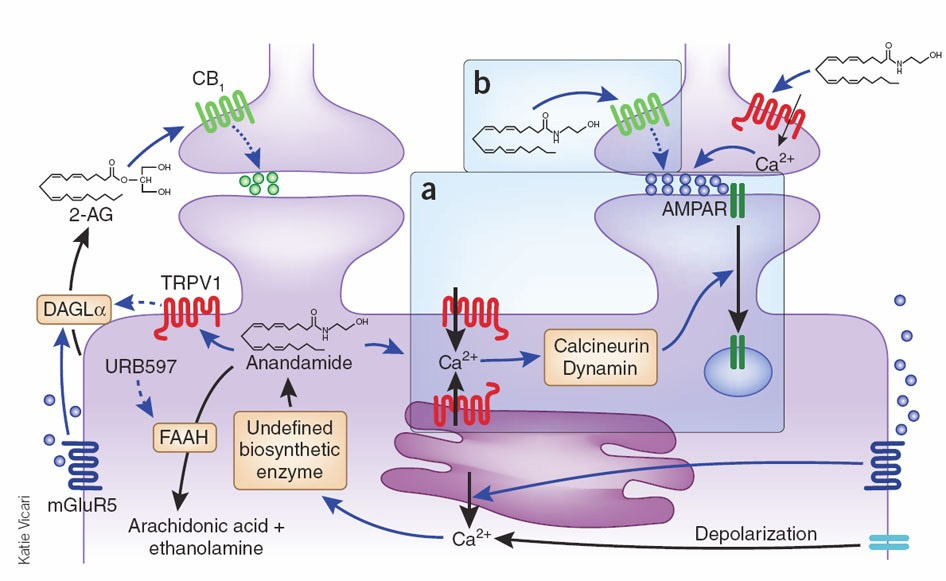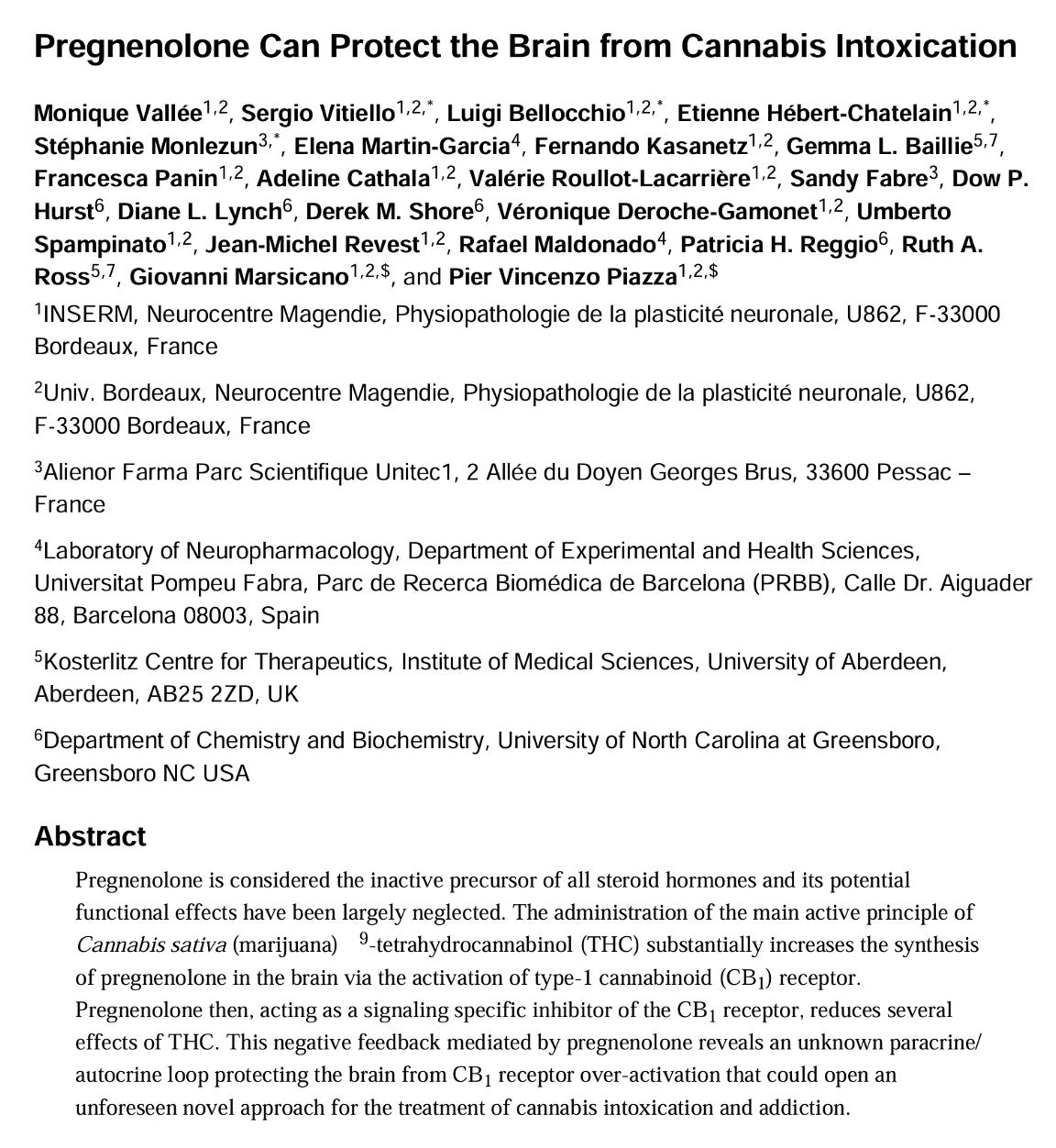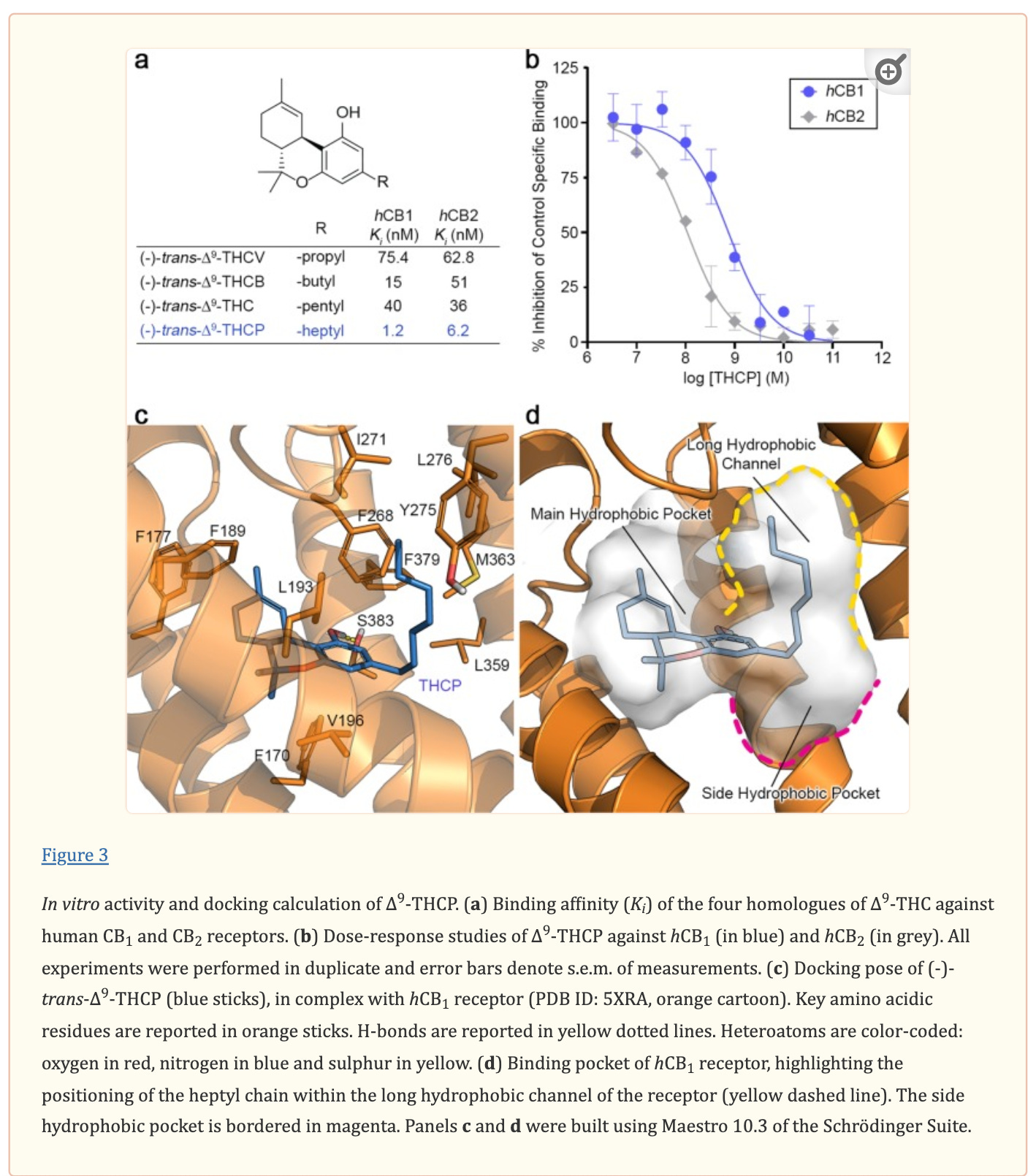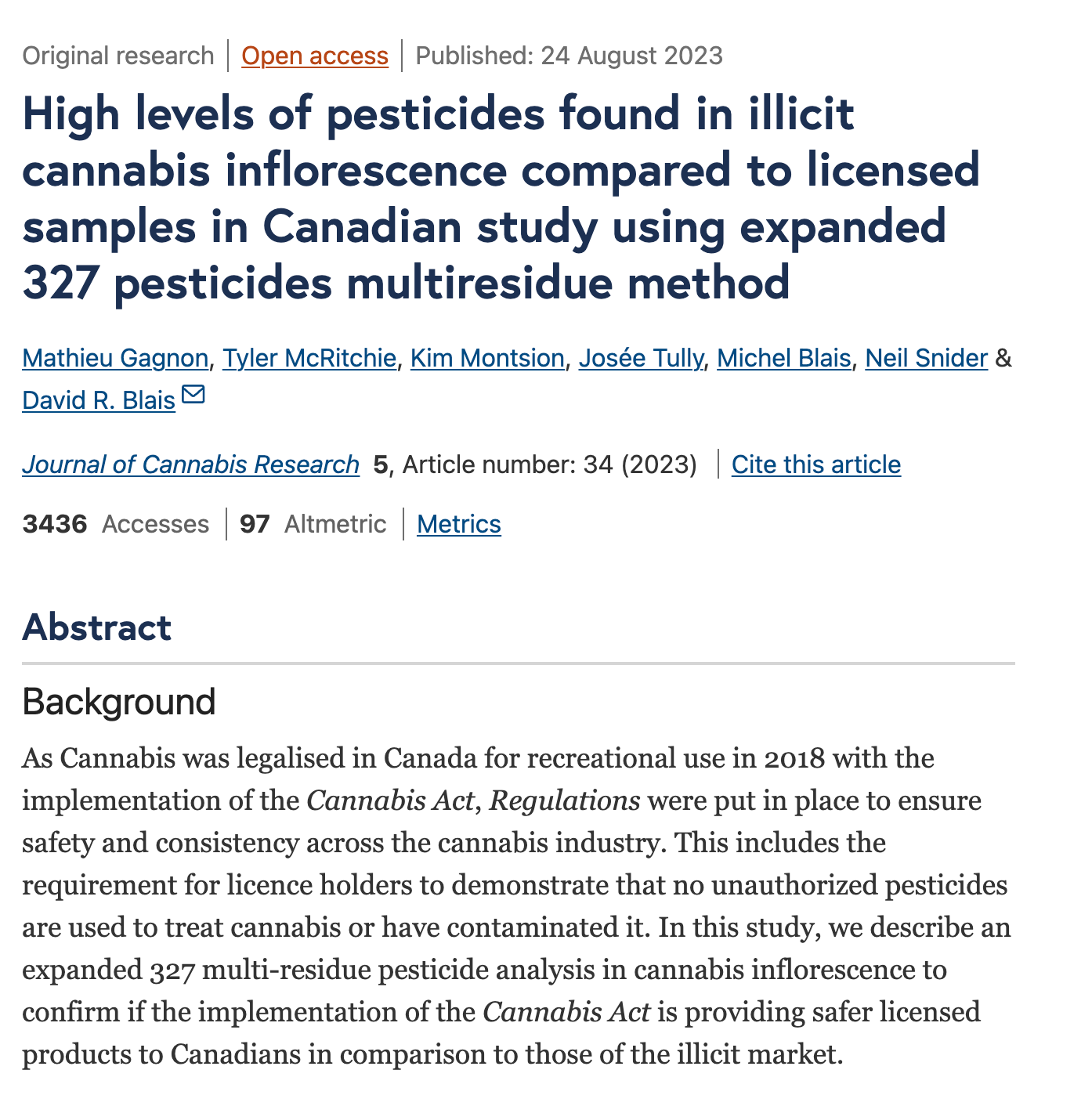When Andrew Huberman put out his initial cast on cannabinoids, many in the cannabinoid science field recoiled at the mixture of bud-tender bro-science mixed with a wikipedia like distillation of a very complicated field.
Much to Andrew’s credit, when some pretty sharp criticism was levied his way, he responded with curiosity and asked for an expert to come on his show and correct the record.
Matt Hill did just that and brought an excellent review of the receptor biology.
https://x.com/hubermanlab/status/1810349447483904021?s=46
Being involved in CannMed, I have a more patient orientated and physician bias and would like to point him to a few data points from that field. They are often anecdotal as running double blind placebo controlled studies in this field is very complicated but I believe its evidence that needs to be on the table particularly in their discussion regarding the therapeutic potential of CBD.
I was very intrigued about their discussion on THC administration compared to endocannabinoids like Anandamide. They discussed how FAAH inhibition (the enzyme that breaks down the endocanninoid known as Anandamide) doesnt lead to a high. Elevated anandamide via FAAH inhibition is likely different than systemic administration of THC as the FAAH inhibition may have more restricted spatiotemporal expression. I’m curious if system administration of anandamide (not via FAAH inhibition) is different and to best measure this given its rapid metabolism? There are also more than 2 eicosanoids (endocannabinoids and other 20 carbon polyunsaturated fatty acids) but this would require another hour to dig into this long tail of edge cases.
Important to this topic of CNR1 activity is the work demonstrating the interaction with Cox-2 inhibitors like ibuprofen and pregnenalone on THC activity. They have different impacts on the intracellular GPCR activity. Ibuprofen interferes with the short term memory impact and pregnenalone on the high.
https://www.ncbi.nlm.nih.gov/pmc/articles/PMC5447368/pdf/emss-70886.pdf
Preganenalone is synthesized in the mitochondria. 15% of neuronal CNR1 receptors are on neuronal mitochondria (Bernard et al -https://www.nature.com/articles/nn.3053)
Duncan Ryan highlights the impact of CBD on calcium regulation in the Mito.
https://pubmed.ncbi.nlm.nih.gov/19228959/
I don’t think a discussion on the munchies is satiating unless we discuss mitochondria and the paradoxical results that cannabis users tend to have lower BMIs despite the munchies. Some of this paradox likely lies in Cannabinoid-mitochondrial interactions and is often a topic of focus in cancer biology.
As for CBD effective dosages for Epilepsy, this is an extreme neurological analogy as this condition is often targeting kids having 100’s of seizures/day with a highly penetrant genetic disease (often a SCN1A mutation) like Dravet syndrome. Dustin Sulak has put together a good collection of literature underscoring the biphasic dose response curves with cannabinoids and how therapeutic effects can be seen with sub milligram doses of some cannabinoids. We need to keep this literature in mind when considering the activity of CBD for less extreme neurological dysregulation and their parallels to Epilepsy.
From a botanical standpoint…
Most CBD on the market is made from TypeIII cannabis plants which are CBDAS positive. This CBDAS gene makes a 20:1 ratio of CBDA:THCA. Therefor most CBD gummies on the market are 20mg CBD:1mg THC. We can’t ignore the 1mg of THC when evaluating the reported benefits of CBD in the marketplace. Few providers are going through the pain of fractionally distilling CBDA crystal. GW has a pure CBD product but most CBD on the market just has to be under 0.3% THC. This regulation still leaves plenty of room for therapeutic levels of THC to slip through ‘hemp’ products.
Keep in mind some parents have reported longer duration of seizure reduction with ‘Full Spectrum oils” which are likely 'contaminated’ or ‘enhanced’ with other cannabinoids.
Another key component to the CYP2C19, CYP2C9 and CYP3A4 story is the impact of grapefruit juice (bergamottin) on cannabinoid metabolism in the liver. A good rule of thumb is that any drug that has a grapefruit juice warning, should expect slower clearance of those drugs when dosing with high amounts of CBD. Clobazam is the drug that Thiel found a slowed metabolism signal for in Epilepsy trials. Warfarin and Eloquis are in common use in the elderly population using CBD.
https://www.ncbi.nlm.nih.gov/pmc/articles/PMC6333745/
There was some discussion on Cannabinoid alcohol collision in the liver. This is a good place to highlight the literature on alcohol induced liver disease and the beneficial role of cannabinoids.
THC isn’t the only psychoactive cannabinoid. THCP can be found in trace amounts in CIN-RO hemp lines and this has a 30X higher receptor binding activity on CNR1 (1.2nM Ki for THCP vs 40nM Ki for THC).
https://www.ncbi.nlm.nih.gov/pmc/articles/PMC6937300/
Jury is still out on how much more psychoactive this is in humans (receptor binding activity isn’t always a perfect proxy) but black market Pens exist with this native cannabinoid and many other non-native derivatives like Delta8, THCO, and HHC.
Final historical comment- Bill Devane actually named Anandamide but worked in Raphes’ lab.
Keep in mind, most observational studies are not chemotyping the cannabis and CBD is in clinical trials for treating schizophrenia and psychosis. This is an important point as Matt rightfully pointed out that the genetic studies point to a predisposition to cannabis use..ie schizophrenics have drug seeking behavior and some portion of them may find cannabis relieves the symptoms. We can’t know how many people don’t get schizophrenia or have delayed onset because of their use of ‘marijuana’.
The population level data suggests we need to consider this as this could explain why the epidemological data doesn’t show a net gain in schizophrenia. Some could benefit while others are induced and net:net it would results in no change in schizophrenia prevalence.
There is a 3rd complicating confounder in many of these studies. Most studies are observational and recording street use of untested ‘marijuana’. Not only is this not chemotyped for cannabinoid content, these samples are not screened for pesticides, mold, or mycotoxins, all of which could play a role in confounding these studies.
Legalization has led to screening cannabis for these contaminants. Prohibition will ensure this associative confusion remains as black market cannabis continually tests for high levels of these contaminants.
To add to this complexity some human variants have been discovered that may play a role in peoples susceptibility to cannabis psychosis.
COX-2 inhibitors (Ibuprofen) impact on THC and short term memory loss.
https://www.cell.com/fulltext/S0092-8674(13)01360-3
Genetic variants in CNR1 that might play a role in effects.
https://www.ncbi.nlm.nih.gov/pmc/articles/PMC8307475/
AKT1 variants that may play a role in psychosis.
COMT, FAAH and AKT1 variants.
https://www.nature.com/articles/s41398-020-0823-9
This may play a role in Cannabinoid Hyperemesis Syndrome.
TRPV1 receptors explain the capsaicin and hot shower relief.
https://www.liebertpub.com/doi/10.1089/can.2021.0046
Other variants in CNR1 and DAGLA we have published on regarding neurological phenotypes.
https://journals.plos.org/plosone/article?
Overall, a very good podcast but you can only scratch the surface of this field in 3 hours. Many kudos to Andrew Huberman for providing the platform to expand on this complicated topic.
If you are interested in the clinical applications of cannabinoids, all of the presentations at CannMed are public. I think a review of these may alters peoples opinions on CBDs therapeutic value even at lower than epilepsy dosages.
CannMed will be held in June of next year in a tropical location on the East Coast.
More to follow once the dates and locations are solidified.







Personally I never liked any lab isolated CBD or even MJ from your local dealer. When VA allowed growing a few plants in my backyard- WOW, what a difference: no red eyes, dry mouth, paranoia, and extremely spiritual! I focused on high CBD seeds (as heirloom as I can get) and grown them outside organically- no chemicals, full spectrum of the sun, natural stressors like bugs, wind, storms, and of course grown slowly and naturally as possible like Nature intended. And the soil has to be clean because cannabis will soak up those pollutants and heavy metals. Dried and cured over a long time, then cooked and packaged my bottles with a balance of hemp and coconut oils. Good balance of THC/CBD/terpenes/etc... you know- the entourage effect which is all about synergy! Since this was a free gift from nature, I gifted these bottles (and dried herb) out for free to friends, family, neighbors, and pets. Helped them all a lot. I am growing CBG White Buffalo right now, but it's more of a struggle than growing other plants in the past 2 years . The weather has been weird in my area, less bees and insects, and I only saw one butterfly and zero hummingbirds so far.
Matthew Waker once mentioned, IIRC on Joe Rogan, that cannabis (I don't recall what of it) inhibits REM sleep. This seems to be rarely mentioned anywhere. Would seem to be rather important, messing with ability to learn well and all sorts of other things.